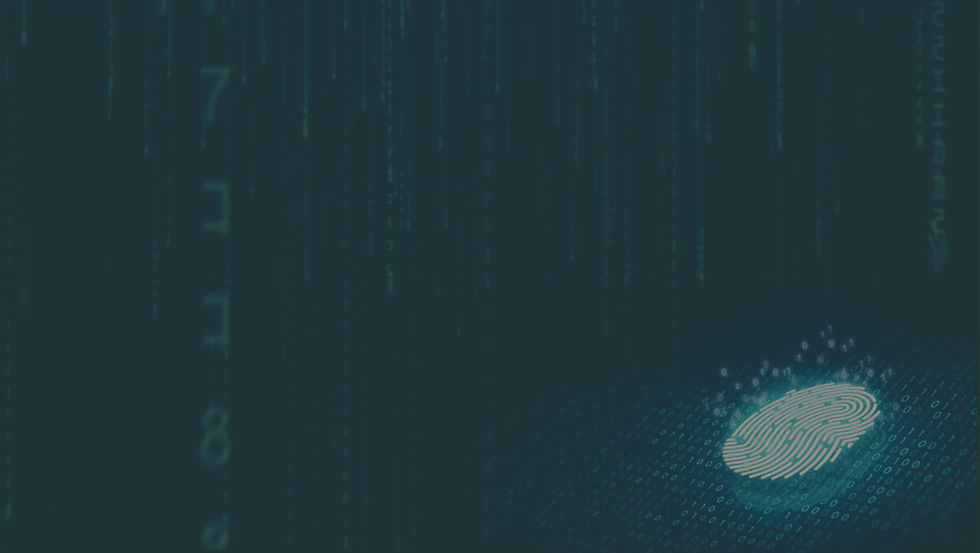[Technology] The Light and Shadow of Biometric Technology
- Kim Min-ji

- 2023년 6월 10일
- 3분 분량
No.164 / Jun 12, 2023

In a year after Google announced it would expand support for its password-free login technology, it is set to release Passkey. It is a technology that allows users to log in using only the unlocking method built into their smartphone, such as face recognition, fingerprint, or screen lock Personal Identification Number (PIN), instead of entering a password. An increasing number of companies are building biometric technology-based login systems. Apple has commercialized the passkey technology in the iPhone Operating System (iOS) 16, Apple Watch operating system 9, and Mac operating system Ventura, which were released in September last year. Biometric technology is used not only in mobile security fields such as passkeys, but also in all areas of society, access control area such as airport and corporate’s entry and exit confirm system, public areas such as electronic resident cards or criminal identification, and medical areas such as remote medical treatment or patient identification.
In the Fourth Industrial Revolution society, wherein technology is embedded in society and even in the human body, the national task is to develop and foster new industries using data utilization technology. In this era of data economy, the factor that determines the success of the Forth Industrial Revolution era is the ability to collect, analyze, and utilize data. In other words, free use of data must be guaranteed to achieve success in the era of the Fourth Industrial Revolution. However, most of the data generated and distributed contain personal information. For this reason, unlike the United States (U.S.), where personal information processing is relatively freely allowed, the Republic of Korea (ROK) had many restrictions on the processing of personal information before revising the privacy law in 2020. Biometric information was particularly restricted because of its unique characteristics that distinguish it from other information. Biometric information is characterized by “inseparability” in that it is information that an individual always has in their body. It also has the uniqueness of everyone’s physical characteristics, and the immutability that cannot be changed because it is a part of the body. For this reason, it is difficult to forge; it does not require users to remember passwords, but once leaked, there is a risk that it will no longer be available. In the various aforementioned fields, biometric information provides economic feasibility, and convenience. It provides the risk of human rights violations by the state through the collection and utilization of people’s biometric information. The Chinese Communist, which controls the people by applying facial recognition technology or walk recognition technology to CCTV, or the Indian government, which promotes commercial use of people’s biometric information by introducing a kind of biometric identification called Aaadhar, are some applications of this technology. Recognizing the risk that someone may be monitoring your life restricts an individual from freely determining their behavior, which is called the atrophy effect. Thus, abuses of biometric technology by the government, such as Aaadhar and CCTV, are as a serious invasion of privacy by the state.
ROK also revised its privacy law in 2020 in line with the trend of the Fourth Industrial Revolution in order to reduce utilization restrictions, but in line with the trend of increasing biometric technology, bio-related information was included in sensitive information. However, there is insufficient discipline in terms of data protection. Therefore, greater legal clarity and institutional security is urged.
By Kim Min-ji, AG Senior Editor
mmoboo77@ajou.ac.kr


![[Technology] Fueling a Greener Tomorrow with Hydrogen Fuel-Cell Vehicles](https://static.wixstatic.com/media/c71c22_9d83d854c70e4420abbd45b141297356~mv2.jpg/v1/fill/w_980,h_702,al_c,q_85,usm_0.66_1.00_0.01,enc_avif,quality_auto/c71c22_9d83d854c70e4420abbd45b141297356~mv2.jpg)
![[Technology] Drone vs Anti-Drone](https://static.wixstatic.com/media/c71c22_a8d4a3e5d2de46438ad18f06f5396011~mv2.jpg/v1/fill/w_762,h_535,al_c,q_85,enc_avif,quality_auto/c71c22_a8d4a3e5d2de46438ad18f06f5396011~mv2.jpg)
![[Technology] An Overview of the Current Landscape](https://static.wixstatic.com/media/c71c22_349acb28b4104301ab6ac67a2ebc0aec~mv2.jpg/v1/fill/w_774,h_545,al_c,q_85,enc_avif,quality_auto/c71c22_349acb28b4104301ab6ac67a2ebc0aec~mv2.jpg)
댓글